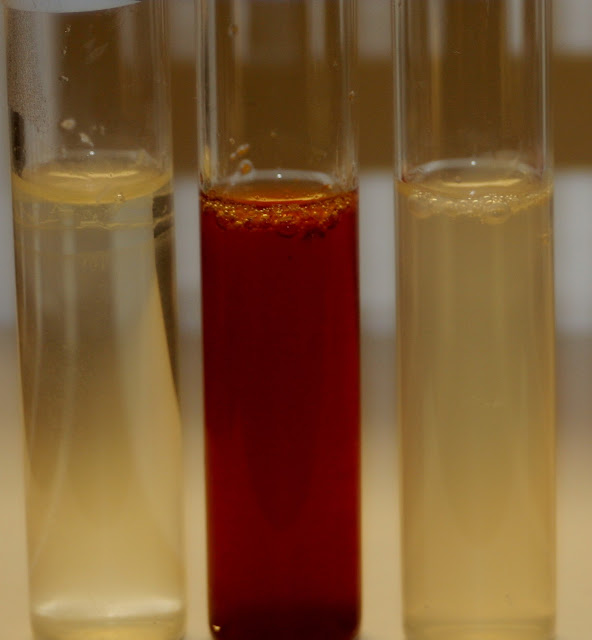
Nitrate Reduction/Nitrate Reductase Test Some bacterial species are able to reduce nitrate (NO3) to nitrite (NO2) using the enzyme nitrate reductase in an anaerobic process by using molecules other then oxygen, nitrate, as a terminal electron acceptor. To determine if a bacteria is able to reduce nitrate they are grown in a nitrate broth and a series of chemical are added to detect nitrate reduction. (A) (B) (C) Nitrate reduction test for the reduction of nitrate in nitrate media, to determine if the bacteria contains nitrate and/or nitrite reductase. Organism were incubated for 48 hr's at...

